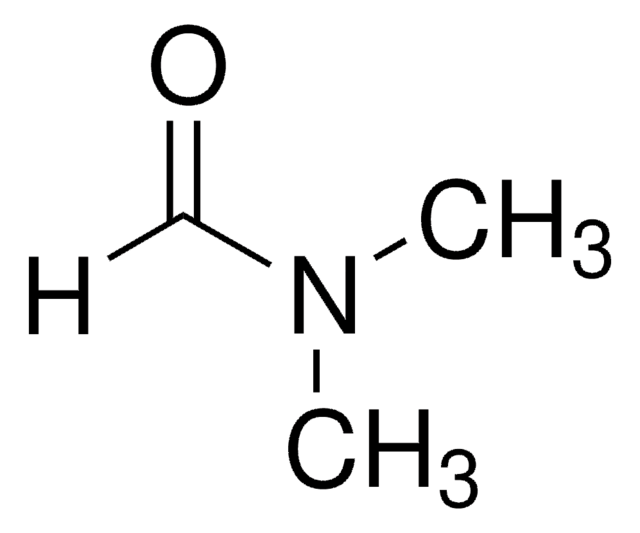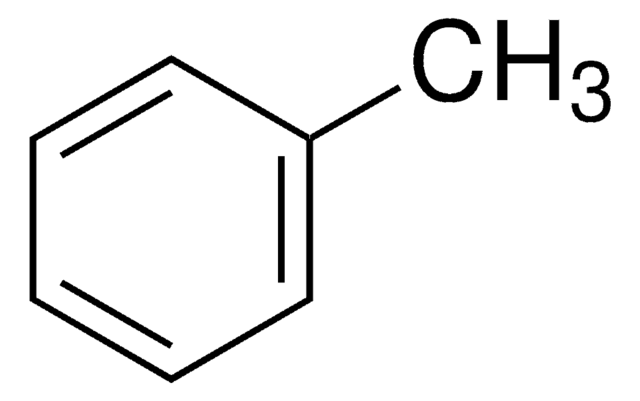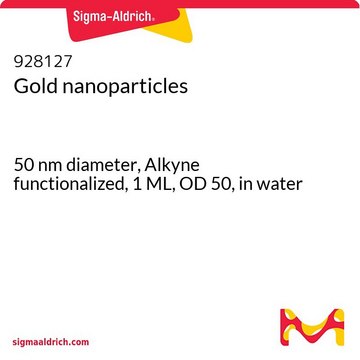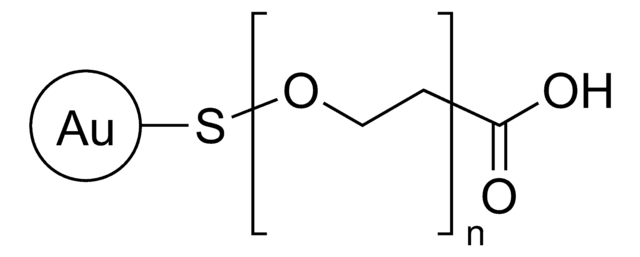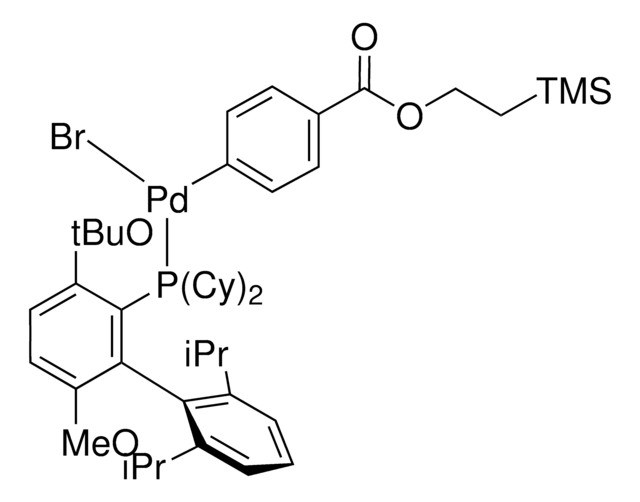765686
Gold nanoparticles
50 nm diameter, methyl terminated, PEG 5000 coated, OD 50, dispersion in H2O
Synonym(s):
Gold nanoparticles OMe terminated, Au NP OMe, Gold Colloid
About This Item
Recommended Products
material
PEG 5000
Quality Level
form
dispersion in H2O
nanoparticles
packaging
poly bottle of 1 mL
OD
50
diameter
50 nm
pH
6.0-8.0 (25 °C)
solubility
water: miscible
density
1.00 g/cm3
λmax
535 nm
functional group
methoxy
storage temp.
2-8°C
Looking for similar products? Visit Product Comparison Guide
General description
Application
- Since they adhere to cell membranes, AuNPs may find use in cellular and intracellular targeting in targeted drug delivery applications and may also used in biodistribution studies.
- AuNPs may also be used in photothermal therapy and radiotherapy.
- AuNPs ranging from 10 to 250 nm, were studied to have been absorbed primarily by liver and spleen , when injected intravenously in rats.Whereas, 10 nm nanoparticles were distributed more broadly into various organs.
- Studies show that 30-nm PEG-coated AuNPs have been successfully used to deliver tumor necrosis factor to solid tumors.
Features and Benefits
Storage Class Code
12 - Non Combustible Liquids
WGK
WGK 1
Flash Point(F)
Not applicable
Flash Point(C)
Not applicable
Regulatory Information
Choose from one of the most recent versions:
Already Own This Product?
Find documentation for the products that you have recently purchased in the Document Library.
Articles
The recent emergence of a number of highly functional nanomaterials has enabled new approaches to the understanding, diagnosis, and treatment of cancer.
Biomaterials science integrates smart materials into biological research, requiring a deep understanding of biological systems.
Our team of scientists has experience in all areas of research including Life Science, Material Science, Chemical Synthesis, Chromatography, Analytical and many others.
Contact Technical Service